Click above image for a high-res gallery of the 2008 Honda Accord
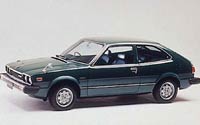
While 1976 was a big birthday year for the United States, it was still a pretty dark time for cars. Exhaust emission control systems were only a few years old and engineers were still struggling with the new technology. A new gizmo called a catalytic converter was starting to appear in many cars and that necessitated the use of gasoline that was free of tetra-ethyl lead. In those days before sophisticated electronic engine controls, most components were still mechanical and engines weren't working as well as they had only a few years earlier. They were using more gas and they were down on power.
Honda Motor Company had its first automotive hit with the
Civic that had been introduced a few years earlier. In 1976, Honda introduced a second larger model to its U.S. lineup dubbed the
Accord. While the new car was indeed larger than the Civic, it was by no means large. The first Accords measured a whopping 93.7 inches between the axle center-lines and 162.0 inches from bumper to bumper. Power came from a "screaming" 1.6L four-cylinder with a finger pulling 68 HP and Honda's revolutionary CVCC system. September 2007 marked the debut of what is arguably Honda of America's most important model, the new eighth generation
2008 Honda Accord. Honda provided Autoblog with a fresh Accord EX-L V-6 sedan to drive from the first week's production run. We'll tell you all about our experience after the jump.
All photos ©2007 Sam Abuelsamid / Weblogs, Inc.
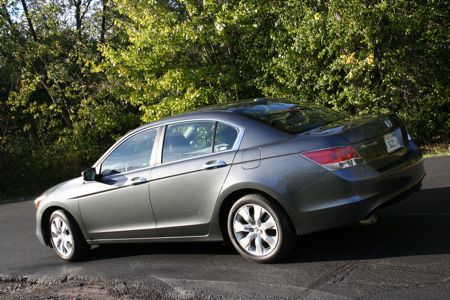
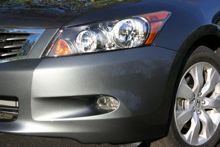
Since it's original appearance in 1976, the Accord has grown both in importance and physical stature, with the newest iteration being bigger than ever. For comparison's sake, Honda's smallest current U.S. market car is the
Fit, which has a wheelbase three inches longer than the 1st gen. Accord and 400 lbs. more mass. Of course, the Fit has a lot things that first Accord never did like a plethora of airbags, four doors, anti-lock brakes, traction control and other features. As each of the seven successive generations got bigger, sales continued to climb. A four door sedan was eventually added while the original two door hatch was dropped. Later a station wagon was added and dropped and a two-door coupe joined the party and remains today. In 1982 when Honda's Marysville Ohio plant opened, the Accord also became the first Japanese branded car to be assembled in North America.
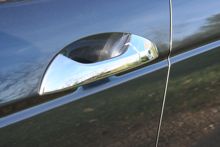
Along the way. Honda decided that the U.S. market needed a design distinct from the Accord sold in the rest of the world. Honda developed an architecture for it that could easily be stretched in length and width. Since the early '90s, Honda R&D in the U.S. has taken primary responsibility for developing the North American model that is longer and wider than other Accords sold around the world. The Accord platform has since evolved to underpin a wide variety of vehicles including the
Odyssey,
HighlanderPilot, and
Acura MDX and
TL. Subsequently, the overseas market Accord also became available here as the
Acura TSX. During the mid-90s, the Accord overtook the
Ford Taurus as the best selling passenger car in the U.S., a slot it held for a couple of years before being passed by the
Toyota Camry. The
Camry still maintains the top spot with the Accord close behind, both selling upwards of 400,000 units a year in the U.S.
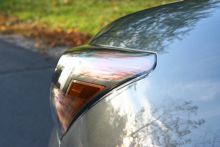
From a car that began smaller than the Fit, the new car is now classed as a Large Car based on EPA classifications. The 194.3-inch body sits on top of a 110.2-wheelbase that is five inches and one inch longer than a Camry, respectively. The
Chevy Impala, however, has a quarter inch longer wheelbase and six inches more body length. The new
Malibu is 2.5 inches shorter, but the wheels are two inches closer to the bumpers. As with so many people living in America, the Accord has also put on some pounds. Over eight generations of evolution, the Accord has gone from a featherweight 2,000 lbs to an almost porky 3,616 lbs in V6 form, although the base four-cylinder model is a more moderate 3,230 lbs.
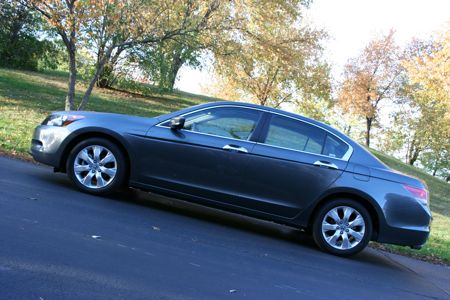
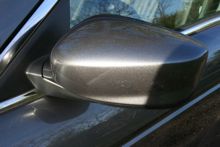
While the last Accord's exterior design was considered pretty bland by most observers, the new car has a lot more character. The overall proportions of the sedan are attractive with a fairly short overhang in the front but a little more substance in the back. In profile it becomes apparent that the line of the rear glass is extended downward and picked up by the lower edge of the tail-lights. Letting the eye meander over the body, a lot of surface detailing starts to become apparent.
Elements appear like the flaring around the fog-lights and the dividers between the segments in the front turn signals. The lower edge of the fog-light enclosure continues backward in a continuous line around the wheel wells, across the lower sill and into the rear bumper. Higher up on the side, another character line starts near the top of the wheel well with a horizontal orientation and curves up, sweeping back to meet the top edge of the tail-light cluster and providing a bit of a wedge to the profile.
 The FCX concept on the left and 2008 Accord on the right
The FCX concept on the left and 2008 Accord on the right
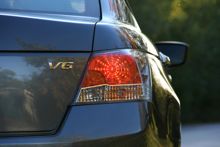
The grille features what appears to be the new face of Honda with a look that appeared on the FCX concept and was added to the Odyssey van this year, as well. It's comprised of three thin dark horizontal bars with an upturn at each end. Out back the LED tail-lights shine through their clear covers in a star-burst pattern and the reflectors eschew the oh-so-2005 silver look for a more traditional red. Other beautiful details abound like the shape of the door handles (finished in chrome on our top-level EX, body color on lower models) and the mirror housings. The whole look is very well integrated with plenty of elements to catch the light though not appearing over-wrought like some of the vehicles from a certain Munich-based company.

Interior materials are first rate. The black interior is set off by selected strips of contrasting matte finish
alumi-plastic. On a mainstream sedan like this one, we wouldn't expect leather covering the dash and door panels. However, the soft touch plastic on the top of the dash has a grain and color that almost perfectly matches the leather covering the seats. And those seats! The Accord has what are probably the best front seats I've occupied in recent memory. They have padding that is firm without being hard, providing support in all the right places with plenty of lateral grip to keep you from sliding around when cornering. The lower cushions are long enough to provide plenty of thigh support and I'm pretty sure one's back would not come away from a long
road trip feeling tortured. If there is a single element I would take from the Accord and apply to every other vehicle on the road it is the front seats.
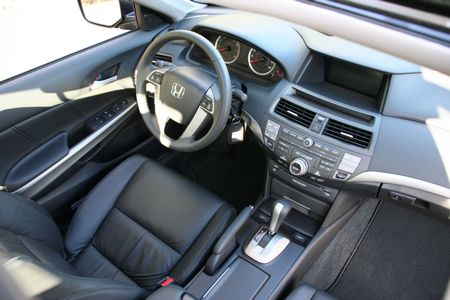
The rear seats obviously don't have as much contouring, but they easily accommodate three passengers. The wide center arm-rest folds down to provide a pair of cup-holders, and a pass-through is available for long thin objects. The rear seat back can also fold down but doesn't split, which somewhat lessens its utility. Returning to the driver's space, all the switchgear is within easy reach and HVAC and audio controls controls are housed in a pod that protrudes just slightly from the rest of the dash. There are quite a few buttons, but they are large and clearly marked. Even though the GPS navigation screen is deeply recessed into the top center of the dash, at times the sun coming in from the passenger side would still wash it out. The distance to the display also means a touch screen would be impractical. Honda provides a big round, combination joy-stick dial controller in the center pod that is primarily for use with the NAV system but also operates some of the secondary functionality that's embedded within, like the trip computer and calculator. We found the NAV system to be quite easy to use and thanks to dedicated buttons for the audio and HVAC on the dash, there was minimal menu navigation. The instruments, though few, are extremely easy to read with a clear font and good lighting at night.
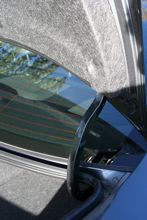
The trunk is fairly spacious and well shaped, but interestingly Honda has chosen to forgo four-bar-link hinges in favor of more intrusive fixed units in an obvious cost cutting measure. Another cost saver appears to be the trunk lid. Closing the trunk doesn't give that nice solid feel that the doors have. It actually felt flimsy. That's a minor nit pick but not the only fit and finish issue on this very early production unit. A close examination revealed a couple of minor panel alignment problems that are sure to be worked out as production proceeds. However, one of these
mis-fits was likely the source of what sounded like an air leak around one of the doors that would also squeak when traversing rougher pavement.
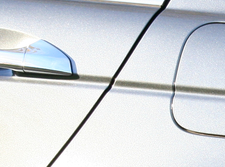
Speaking of traversing pavement, the Accord suspension does a great job at that. While a bit more roll control would be appreciated in some instances, the spring rates and damping felt just right. The car never felt loose and steering response was excellent. As with most mainstream cars, there wasn't much feedback, but the effort was nicely weighted and there was no noticeable dead spot off-center. Spirited driving was enhanced by those wonderful seats and a nicely positioned dead pedal for the driver's left foot.
The brake pedal, meanwhile, had good feel and was easily modulated. The panic brake assist system never made its presence felt in any noticeable way unlike some other vehicles we've driven. When the electronic stability control decides you need some assistance, it just subtly helps keep the car going where the driver is pointing the wheel without jerking it around in your hands or providing any additional sound effects (Are you listening Toyota?).
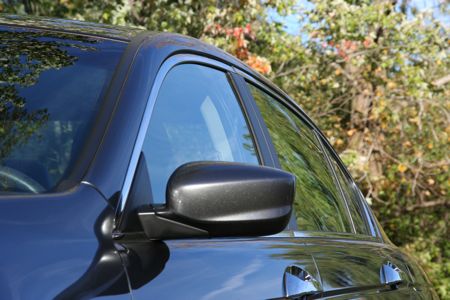
As is usually the case in a Honda, the engine is perfectly suited to the task at hand. The 3.5L V-6 couldn't be smoother as it develops it's 268 HP and 248 lb-ft of torque. To help fuel efficiency, this engine has received a cylinder deactivation system that allows it to seamlessly switch between running on three, four or six cylinders. We were never able to detect how many cylinders were active at any given time or even feel the transitions. Additionally, a green "ECO" light comes on in the lower part of the tach when the car is operating at its maximum efficiency. The engine's output is transferred to the front wheels via a five speed automatic that is not augmented with paddle shifters, and frankly, they're not missed. Acceleration was noticeably stronger under all circumstances than the
Dodge Avenger we recently drove, which is to be expected given the substantially higher output. In spite of all that extra acceleration, the Accord still managed 22 mpg in a week of mixed driving, only one less than the
Avenger and about 2.5 more than the Avenger running on E85. That's not great mileage, but it's certainly competitive with other big V-6 sedans. We're looking forward to 2009 and the new 2.2L turbo-diesel that Honda will supposedly be dropping in the Accord that should yield rear-world highway mileage in the upper 40s.
This particular loaded Accord priced out at $30,895 including destination. If you can live without the built-in navigation system or you don't need the added grunt of the six-cylinder engine, manual transmission four-cylinder models can be had for as low as $20,360. As long as the team in Marysville can sort out their door alignment issue, and I suspect they already have, this is an outstanding and stylish family-sized sedan with the best seats in the business. Now hurry up and bring on that diesel over here so we can get some serious mileage, too.
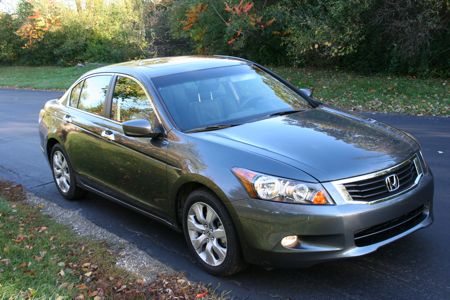
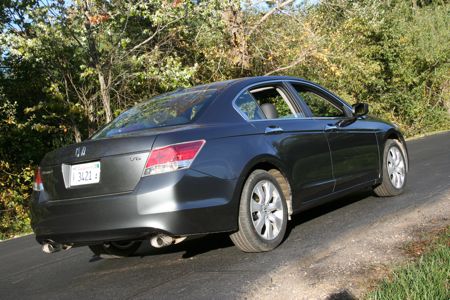

















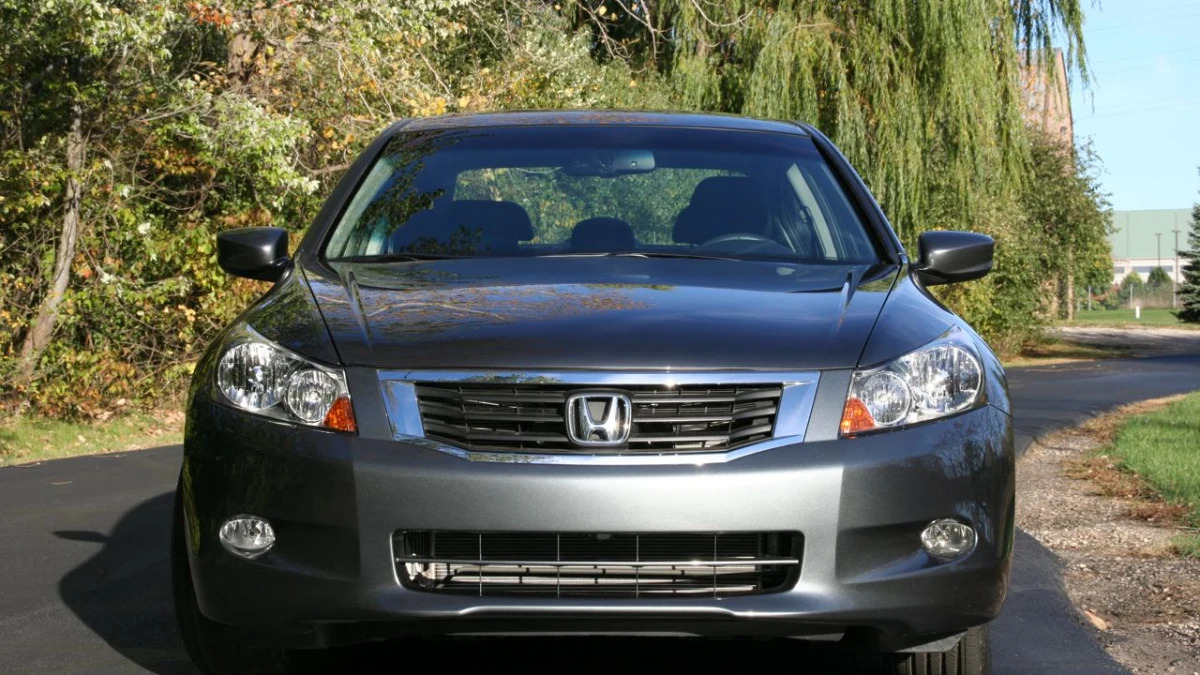

Sign in to post
Please sign in to leave a comment.
Continue